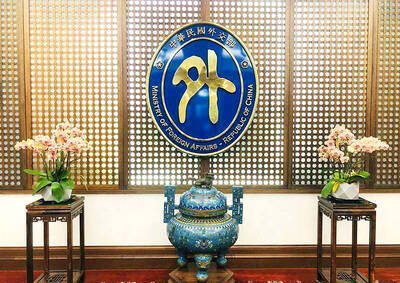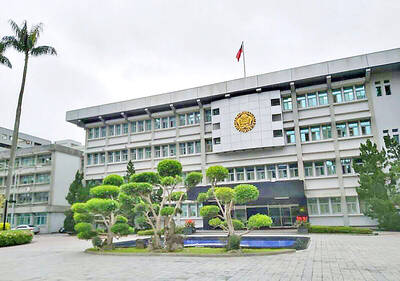An increasing number of children are getting red bumps on their eyelids, or styes, accounting for about 20 percent of eye infection cases, due to a diet of high-fat foods, such as fried chicken and french fries, an ophthalmologist said yesterday.
Citing a recent case, Yen Min-fang (顏敏芳), director of Shutien Memorial Hospital’s ophthalmology department, said that a four-year-old girl suffered from a recurrence of styes, with five swollen bumps on her eyelids when she visited the clinic a couple of months after the first onset of the symptoms.
She was diagnosed with multiple hordeola and chalazion, and underwent a minor operation.
Yen said the number of child patients with styes has increased recently, most of whom are between the ages of three and seven.
“Children these days tend to have too much fatty food and dislike drinking water. This might result in excessive production of sebum, which then triggers the incidence of styes,” she said.
Styes are caused by the blocking of sweat or sebaceous glands at the base of eyelashes, which then become infected and lead to common symptoms such as burning pain and pus-filled abscesses, Yen said.
“While a hordeolum is caused by both obstruction to the glands and bacteria infection, a chalazion is caused by a blocked duct of the gland without the infection,” she said.
Yen advised people against regular consumption of high-calorie and deep fried foods (poor nutrition), staying up late (sleep deprivation) and habitual rubbing of the eyes.
Those with minimal symptoms can apply warm compressions and antibiotic eye drops or ointments to the affected eye, she said.
“If necessary, those with persistent styes can choose to have them surgically removed under local anesthesia or general anesthesia if they are children,” Yen added.

The German city of Hamburg on Oct. 14 named a bridge “Kaohsiung-Brucke” after the Taiwanese city of Kaohsiung. The footbridge, formerly known as F566, is to the east of the Speicherstadt, the world’s largest warehouse district, and connects the Dar-es-Salaam-Platz to the Brooktorpromenade near the Port of Hamburg on the Elbe River. Timo Fischer, a Free Democratic Party member of the Hamburg-Mitte District Assembly, in May last year proposed the name change with support from members of the Social Democratic Party and the Christian Democratic Union. Kaohsiung and Hamburg in 1999 inked a sister city agreement, but despite more than a quarter-century of

The Ministry of Foreign Affairs (MOFA) yesterday expressed “grave concerns” after Singaporean Prime Minister Lawrence Wong (黃循財) reiterated the city-state’s opposition to “Taiwanese independence” during a meeting with Chinese Premier Li Qiang (李強). In Singapore on Saturday, Wong and Li discussed cross-strait developments, the Singaporean Ministry of Foreign Affairs said in a statement. “Prime Minister Wong reiterated that Singapore has a clear and consistent ‘one China’ policy and is opposed to Taiwan independence,” it said. MOFA responded that it is an objective fact and a common understanding shared by many that the Republic of China (ROC) is an independent, sovereign nation, with world-leading

Temperatures in northern Taiwan are forecast to reach as high as 30°C today, as an ongoing northeasterly seasonal wind system weakens, the Central Weather Administration (CWA) said. CWA forecaster Tseng Chao-cheng (曾昭誠) said yesterday that with the seasonal wind system weakening, warmer easterly winds would boost the temperature today. Daytime temperatures in northern Taiwan and Yilan County are expected to range from 28°C to 30°C today, up about 3°C from yesterday, Tseng said. According to the CWA, temperature highs in central and southern Taiwan could stay stable. However, the weather is expected to turn cooler starting tonight as the northeasterly wind system strengthens again

The Ministry of Justice Investigation Bureau (MJIB) has been investigating nine shell companies working with Prince Holding Group, and the Taipei District Prosecutors’ Office is seeking further prosecution of alleged criminals, a source said yesterday. The nine companies and three Taiwanese nationals were named by the US Department of the Treasury’s Office of Foreign Assets Control (OFAC) on Oct. 14 as Specially Designated Nationals as a result of a US federal court indictment. Prince Holding founder Chen Zhi (陳志) has been charged with fraud, conspiracy, money laundering and overseeing Prince Holding’s suspected forced-labor camps in Cambodia, the indictment says. Intelligence shared between Taiwan,